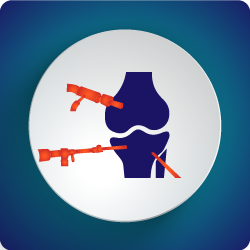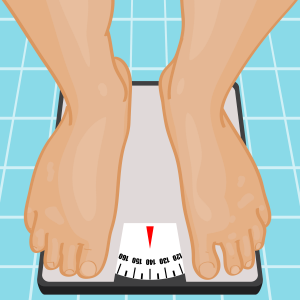
Non operative ways to manage Knee Arthritis
Knee arthritis can present as pain in the knee, hip or even down the leg. It can start in a variety of ways, wand is very different in how it progresses. In some cases, knee arthritis worsens quickly, taking only a few months to go from being completely fine, to barely being able to walk. In other cases, the first niggle in the knee might be felt 10 years before. In any case, there are some ways to decrease the pain experienced with knee arthritis. In this article, we will look at some of the more reliable ways, and also address what doesn’t work.
Physiotherapy for Knee Arthritis
Studies have shown that maintaining a strong set of muscles around the knee will decrease the pain associated with knee arthritis. This can be done with your own gym or fitness group, or can be directed by a physiotherapist. Often a physiotherapist is a good person to start helping you, because they know how to limit the activities that will aggravate your knee, whilst being able to focus on those that will improve knee pain. Whilst physiotherapy or knee exercises won’t reverse the process of knee arthritis, they certainly do help with how much pain is experienced. When the knee is unstable due to weak muscles, patients feel more pain. In particular, weak quadriceps (driver muscles) seem to affect people the most.
Medication for Knee Arthritis

Knee arthritis Management with medication
Knee arthritis Management with medication can make the difference between needing a total knee replacement sooner rather than later. The main medications used are basic, generally over the counter medications. Once you require stronger pain medication, it is usually time to seek some help from an Orthopaedic Surgeon.
The main types of medications used in the treatment of knee arthritis include simple pain relievers, anti-inflammatories and natural supplements.
Glucosamine and Fish Oil:
A lot of studies have been performed on Glucosamine and Fish Oil. These do show some symptomatic improvement in patients with knee arthritis and hip arthritis. Glucosamine Sulphate is the most widely studied preparation (1000mg) with Fish Oil Liquid being the most studied preparation. In large studies of over 20,000 people, they have been shown to improve symptoms in approximately 60% of people. The recommendation is to try these supplements for 3 months. If you do not notice any improvement, then stop taking this, as you may be the 1 in 3 people that this doesn’t not work for. These supplements do not change the underlying disease. They are purely a natural anti-inflammatory, and can usually be taken safely with other anti-inflammatories. People who are allergic to Shellfish should be wary, as Glucosamine is made from the shell of shell fish.
Panadol Osteo
In Australia, Panadol Osteo (Paracetamol – longer acting) is often given to patients to manage their knee or hip arthritis. These are relatively safe medications, but should be taken in conjunction with advice from your general practitioner. In higher than prescribed doses, they can be harmful to the liver. Most people can take 2 tablets, 3 times per day (Total 6 tablets per day) with very few complications. They can be taken long term, and generally people do not build up a resistance to them. They are an excellent first line medication to manage knee pain.
Anti-inflammatories
There are many anti-inflammatories. Some of these include Ibuprofen, Induced, Mobic, Celebrex, and Voltaren. These are all commonly prescribed in Adelaide, South Australia for the management of knee arthritis. Some seem to work on slightly different pathways, and therefore have different effects. Some of the newer anti-inflammatories were made to decrease the gastrointestinal upset that anti-inflammatories cause. In general, it is not good to take them regularly without a break. A good regimen for anti-inflammatories is to take them for 2-3 days, with 2-3 days break after. This allowed the stomach lining to recover, making it less likely to cause issues. Anti-inflammatories work by decreasing the painful inflammation in the knee. The pain is generally caused by these inflammatory cells that are released as the knee is irritated due to the loss of cartilage, and exposed bone. They can be very effective in managing arthritic pain. Beware when taking too many, or when taking them when you have other medical conditions such as diabetes or kidney disease – as they can damage kidney function in these individuals. If you are otherwise healthy, these medications can be a good first step.
Heavy Pain Medication
Once pain sets in, you may need to take the occasional stronger pain medication. This may include Endone (Oxycodone), Tramadol, or Panadeine Forte. These are all quite strong and should not be used regularly. Prolonged use of these medications can build up a resistance meaning that you need more and more as time goes on, as they become less effective. They also tend to cause constipation and other gastrointestinal upset. For short durations (such as after an operation), they are perfectly suitable, and are usually not an issue.
Weight loss

Weight loss decreases knee pain in arthritis
When your knee becomes painful, often people stop exercising, and do not regulate what they eat. Unfortunately this makes matters worse as your knee tends to become more and more painful when you are putting more weight through it. Studies have shown that in people with a body mass index (BMI) over 35, one of the most effective things to decrease knee pain from arthritis is to decrease weight. This is usually achieved purely through diet, as exercise can be difficult if knee pain is bad. There are many modalities to exercise that are suitable for patients with painful joints. This includes swimming, stationary cycling or walking. Low impact exercises are the key, but most weight loss is successful when a diet/meal plan is used.
In extreme cases, patients may require surgery to stop food from being digested in a particular way. Procedures can also be done to limit the amount of food that can be eaten, without feeling sick. These are end resort measures and should be performed only after someone has tried all of their own methods.
Stem Cells and Other Injections
At the moment, there are several different injectables that have been used in the effort to decrease pain from knee arthritis.
Steroid injection
If you require a period of decreased symptoms, steroids can be injected into the joint. The risk of infection is quite low (approximately 1 in 2000) but it is still present. Steroids also decrease your body’s ability to fight local infections, which is why we use them only when necessary. Steroids are absorbed into the blood stream, causing generalised effects as well, however they are safe to use when only performed up to 3 times in a joint. They can be performed more frequently in some cases. They do not change any of the underlying knee arthritis, and is used only as a different way of relieving pain.
Hyaluronic Acid
This is often known as Synvisc and was originally brought to the market as a long term solution for knee arthritis. It is essentially a thicker version of knee synovial fluid, used in the theory that it will be a barrier between the bones rubbing on bones in advanced arthritis. Over time, it became clear that the effects were limited. Unfortunately, in Australia, the use of Hyaluronic acid injections is no longer covered by Medicare due to studies showing a very short term benefit. Courses can cost over $500 and last up to 6 months.
PRP – Platelet Rich Plasma
Your own blood is taken and then prepared to remove platelet rich plasma. This is then inserted into a joint. This is a relatively new modality and may require several treatments. The hope is that the PRP acts to decrease the pain associated with knee arthritis, however its use is not widespread currently.
Stem cells
Recently, stem cells were shown in the media as a potential to decrease the deterioration of knee arthritis. Unfortunately current studies do not confirm that this occurs. Whilst we can certainly make cartilage, which is a breakthrough of its own, there has been difficulties in telling that new cartilage where to be laid down. This means that cartilage is generally made, and may not stick to the appropriate areas. Whilst this area is interesting, it is a far way off from being a useable, safe reality.
Knee Arthroscopy
When your symptoms first start, it is common for you to see a doctor who will refer you to an orthopaedic surgeon. In general, people over the age of 50 who have spontaneous knee pain that does not go away, the underlying cause is some kind of knee arthritis. Knee arthroscopy, or keyhole surgery has been used for a long time to treat cartilage injuries in sports people. Whilst it is a fantastic way of treating the sportsman who has a new injury from a twisting or impact force, it has limited use in people with established arthritis. A knee arthroscopy should only be viewed upon as a temporary band aid fix to the pain experienced from knee arthritis. It is generally not offered in people with knee arthritis unless there are other considerations. The role in knee arthritis is to remove loose bodies, or new injuries that may have occurred on top of the underlying arthritis.
There are many ways to manage knee arthritis. One of the above ways may help you. It is important to get information from your local doctor to help you make the right choice. Having surgery too early can affect your outcome in the long term, however for those who have tried everything, the only next step, is to consider a knee replacement. Dr Liew performs all of his knee replacements using patient specific technology.
Thankyou for visiting this website. Please note that the information held within this site and on this page are for educational purposes only. Please consult your doctor or health professional always prior to considering any medical therapy or intervention. If you notice an error on this site, please use our contact form to let us know so we can rectify any issues. All information and graphics on this site are the property of Sempire Designs.
